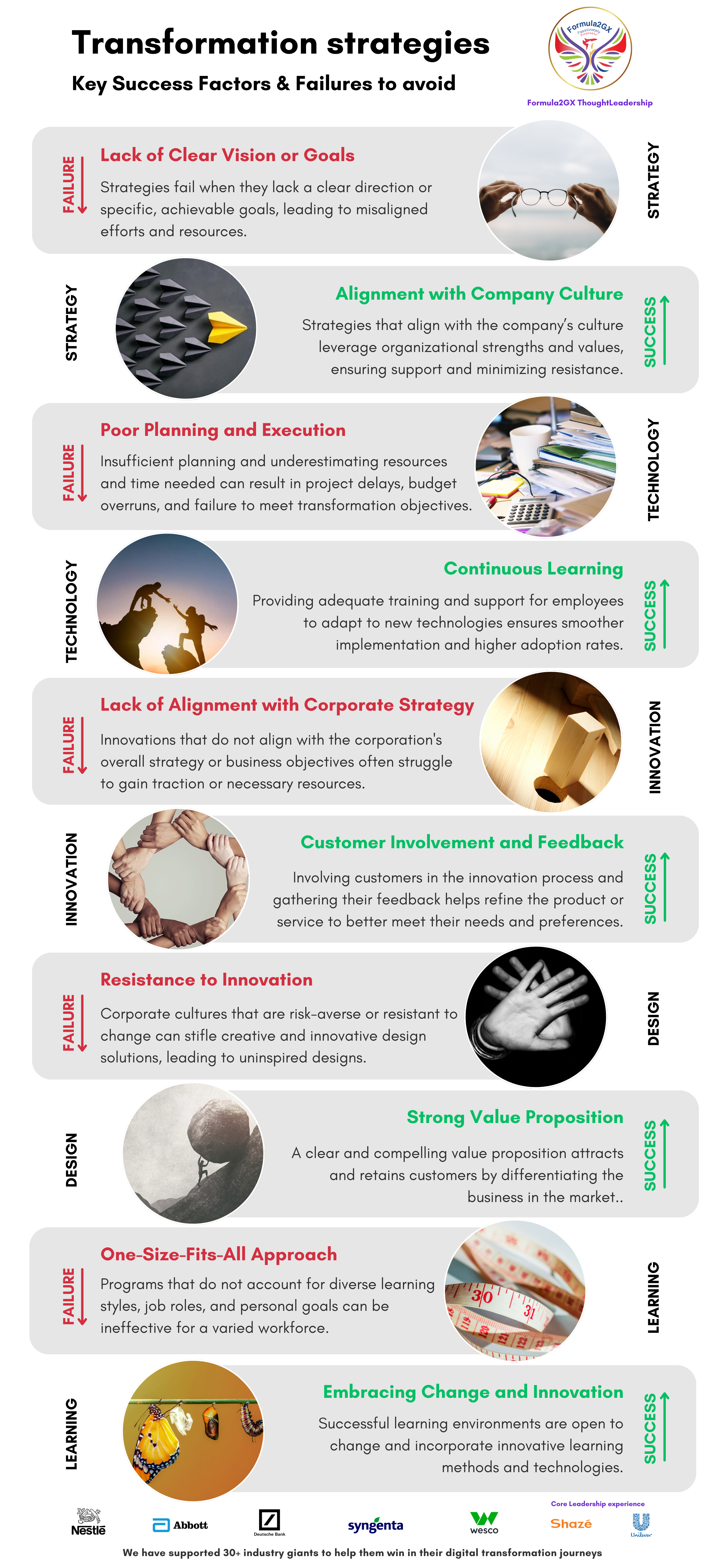Strategy is the cornerstone of an organization’s success. A well-defined and executed strategy provides clarity and direction for senior leaders, enabling them to make informed decisions and prioritize resources effectively. Developing a winning strategy requires strong leadership, clear communication, and a commitment to continuous improvement.
However, executing a successful strategy can be challenging, particularly in today’s fast-paced, ever-changing business environment. The CEO must balance short-term demands with long-term vision, while the CIO must align technology investments with the overall business strategy. The CDO must keep pace with rapid advancements in digital technologies, and the CFO must balance financial objectives with investment in growth initiatives. The CMO must build brand awareness and acquire customers in a crowded market, while the CHRO must attract and retain top talent in a competitive labor market. The Board must ensure the organization’s strategy aligns with its values and purpose.
The CDIO must align technology and digital capabilities with the overall business strategy, the Head of IT must align technology investments with the overall business strategy, the CSO must secure the organization against cyber threats, procurement must balance cost control with access to quality products and services, and the Head of Innovation must identify and develop new products and business models. The Head of Sales must drive revenue growth in a competitive market.
By executing a winning strategy, senior leaders can unlock new growth opportunities, drive efficiency and innovation, and create a culture of continuous improvement. They can also maximize returns for stakeholders, protect the organization’s assets and reputation, improve supplier relationships, and stay ahead of the competition. A successful strategy is the foundation for long-term success and positions the organization for future growth.

Business model design is the process of creating and refining a plan for generating revenue and sustaining operations. It involves identifying key components such as target customers, value proposition, revenue streams, cost structure, and distribution channels.
Challenges in business model design include market competition, changing customer needs, and evolving technology.
Opportunities include leveraging innovation, exploring new markets, and improving customer experiences to create a competitive advantage.
Ability to understand and engage with customers to generate insights and drive customer-led innovation.
Challenges include understanding customer behavior and preferences, collecting and analyzing large amounts of customer data, and addressing privacy concerns.
Opportunities include the ability to drive customer-led innovation, improve customer satisfaction, and increase customer loyalty.
Ability to monitor, understand, and respond to market changes and trends to stay ahead of the competition.
Challenges include staying ahead of competitors, understanding market trends and shifts, and predicting future market conditions.
Opportunities include the ability to stay ahead of the competition, identify new market opportunities, and respond quickly to market changes.
Ability to quickly and effectively adapt to changes in the market and business environment.
Challenges include aligning organizational culture, structure, and processes to support change, overcoming resistance to change, and managing risk.
Opportunities include the ability to respond quickly to market changes, improve operational efficiency, and maintain a competitive edge.
Ability to translate strategy into action, aligning resources and capabilities to achieve strategic objectives.
Challenges include aligning resources and capabilities to achieve strategic objectives, overcoming resistance to change, and managing risk.
Opportunities include the ability to translate strategy into action, achieve strategic goals, and improve overall organizational performance.
Ability to identify and prioritize innovation opportunities, allocate resources to support innovation, and effectively manage the innovation process to drive growth and competitiveness.
Challenges include balancing short-term and long-term goals, managing risk, and creating a culture that supports innovation.
Opportunities include the ability to create new products and services, gain a competitive advantage, and drive growth.
Ability to effectively harness digital technology to drive business transformation, create new value propositions, and enhance customer experiences.
Challenges include identifying and prioritizing the right digital initiatives, overcoming resistance to change, and effectively managing the transition to a digital business model.
Opportunities include the ability to increase efficiency, improve customer engagement, and create new revenue streams.
Ability to integrate social and environmental responsibility into business strategy to create long-term value, enhance reputation, and meet stakeholder expectations.
Challenges include balancing social and environmental responsibility with financial performance, measuring and reporting on impact, and ensuring alignment with broader organizational goals.
Opportunities include the ability to enhance reputation, build trust with stakeholders, and create long-term value. This capability is important because corporations are increasingly expected to consider social and environmental responsibility in their business strategy. Organizations that effectively integrate CSR and sustainability into their strategy can create long-term value, enhance reputation, and meet stakeholder expectations.
The five additional capabilities in strategy include:
Risk management: identify and manage risks associated with strategy initiatives and decisions.
Resource allocation and management: allocate and manage resources effectively.
Performance measurement and management: measure and manage organizational performance.
Organizational design and structure: design and manage organizational structure and processes.
CSR and sustainability: integrate social and environmental responsibility into strategy. These capabilities complement other strategies and help organizations manage their strategy effectively.

We were humbled to be recently referred to as the “Alternative agency to big strategy firms.” Contact us to discover how we can assist you.